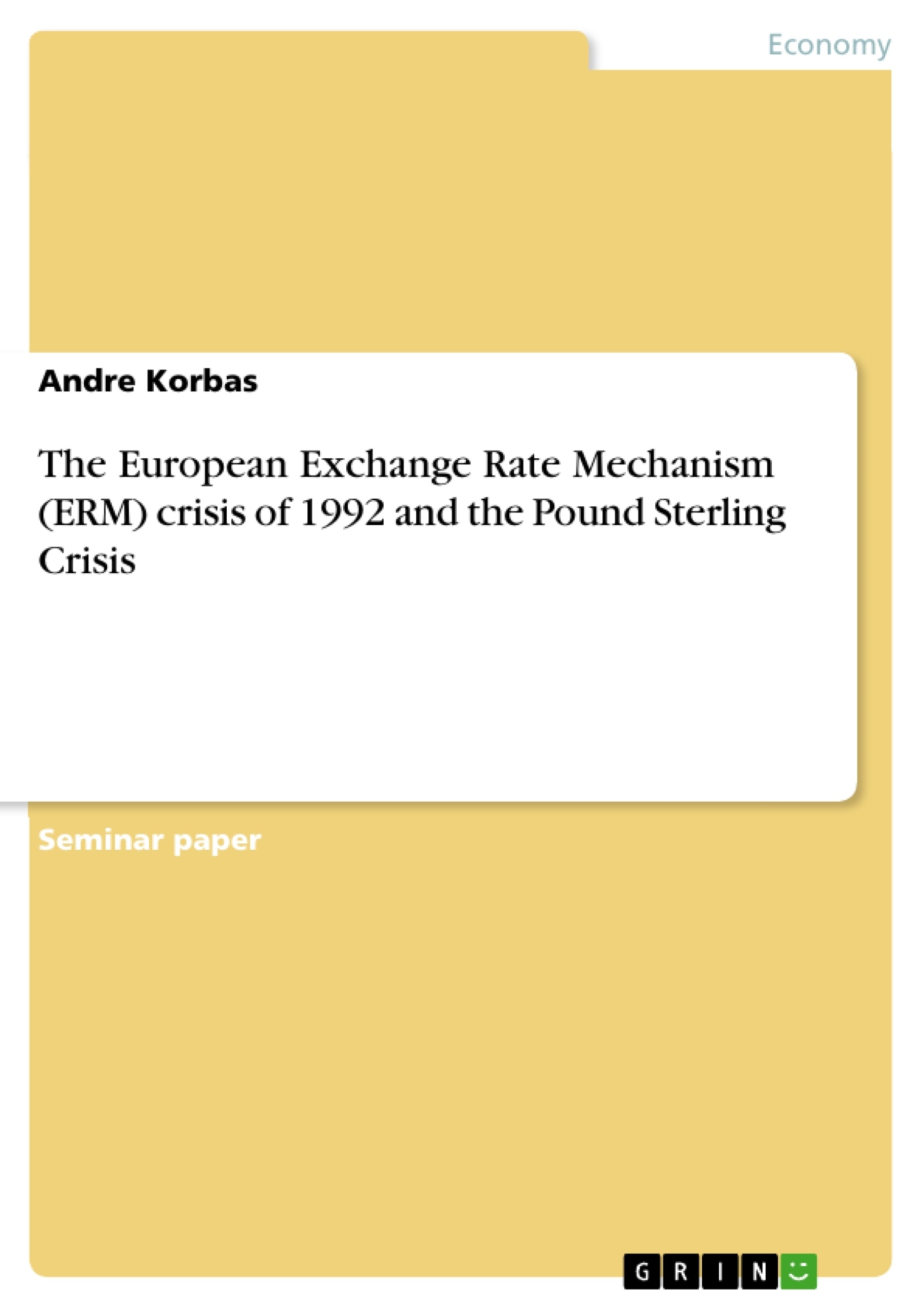This short seminar paper introduces the theory and fundamentals as well as the history and mechanisms which led to the creation of the European Monetary System (EMS) and later the European Economic and Monetary Union (EMU). It also follows the events culminating into the EMS’ crisis in 1992 and the permanent departure of the United Kingdom from this system. With the introduction of the EMU and the expansion of the European Union (EU) in the early years of the new millennium, the question arises of whether it is advisable for the newer members to become part of the European Exchange Rate mechanism-II (ERM-II) which leads to the introduction of the Euro in the future. The scope of this work only allows for a very pinpoint answer for this very complex topic but is a first step into more comprehensive and detailed literature.
Inhaltsverzeichnis (Table of Contents)
- Abstract
- Table of content
- List of abbreviations
- Introduction
- Theories and fundamentals
- Exchange rate theories / hypothesis
- Purchasing power parity hypothesis
- Interest rate parity theory
- Optimal currency area theory
- Forms of monetary integration
- The ,,impossible trinity"
- Exchange rate theories / hypothesis
- European Monetary System
- Historical development
- The European Monetary Systems' goals
- Exchange Rate Mechanism
- The \"Black Wednesday” crisis of 1992
- Timeline
- The role of the German Bundesbank
- Effects
- Exchange Rate Mechanism-II
- Goals of the Exchange Rate Mechanism-II
- The conception of the Exchange Rate Mechanism-II
- Conclusion
- References
Zielsetzung und Themenschwerpunkte (Objectives and Key Themes)
This seminar paper aims to analyze the European Exchange Rate Mechanism (ERM) crisis of 1992 and its impact on the Pound Sterling, providing an in-depth understanding of the factors leading to the crisis. The paper delves into the theoretical foundations and historical development of the European Monetary System (EMS) and its successor, the ERM-II.
- Theories and fundamentals of exchange rates and optimal currency areas
- History and mechanisms of the European Monetary System (EMS) and the ERM
- The 1992 ERM crisis and its impact on the Pound Sterling
- The ERM-II and its implications for future European integration
- The economic rationale for EU countries to join the ERM-II
Zusammenfassung der Kapitel (Chapter Summaries)
The paper starts with an introduction that outlines the scope of the work and the research question. Chapter 2 provides a theoretical foundation by examining exchange rate theories, optimal currency area theory, and the concept of the “impossible trinity.” Chapter 3 presents the historical development, goals, and institutional framework of the EMS and the ERM. Chapter 4 analyzes the dynamics of the 1992 ERM crisis, focusing on the timeline, the role of the German Bundesbank, and the economic consequences. Chapter 5 introduces the ERM-II, its goals, and its design, highlighting the lessons learned from the 1992 crisis. The paper concludes with an assessment of the economic rationale for EU countries to join the ERM-II, considering the experiences of the EMS and the ERM-II.
Schlüsselwörter (Keywords)
The primary keywords and focus topics of the text include the European Exchange Rate Mechanism (ERM), the European Monetary System (EMS), the 1992 ERM crisis, the Pound Sterling, the European Economic and Monetary Union (EMU), optimal currency areas, exchange rate theories, the “impossible trinity”, and the ERM-II. The paper examines the economic implications of these concepts and their relevance to the process of European integration.
- Quote paper
- Andre Korbas (Author), 2020, The European Exchange Rate Mechanism (ERM) crisis of 1992 and the Pound Sterling Crisis, Munich, GRIN Verlag, https://www.grin.com/document/974476




